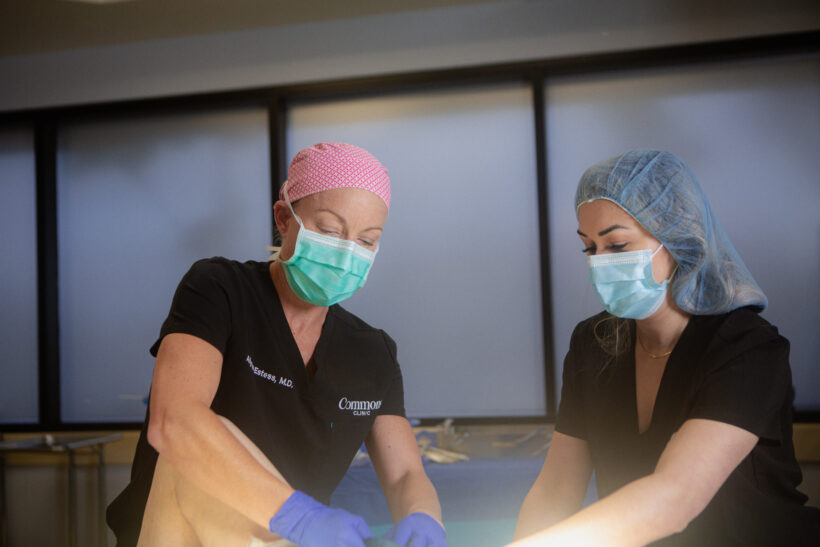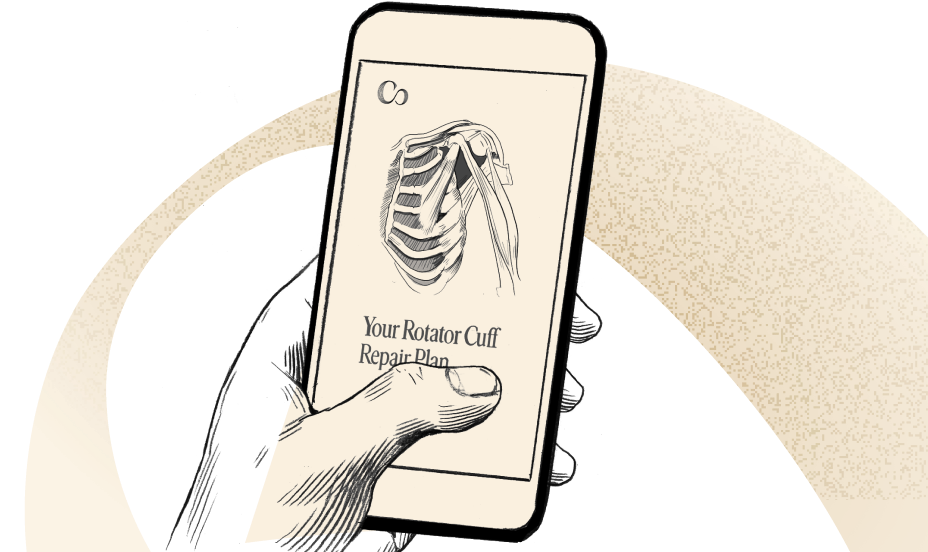13 Best Physical Therapy (Physiotherapy) Exercises for Lower Body Pain Relief
If you’ve ever experienced an ache in your lower back after a long work day, you’re not alone. About eight in 10 Americans experience back pain at some point in their lives. In fact, lower back pain is so common, the World Health Organization (WHO) named it the leading cause of disability worldwide.
But the onset of lower back pain isn’t all bad news. WHO also says it’s one of the conditions that benefits the most from a rehabilitation plan. Often, that plan includes exercises and stretches targeting the lower back and nearby muscles. Physical therapy or physiotherapy exercises for lower back pain are also a great preventative measure, especially for those who spend many hours at a desk, which increases the risk of back issues.
Yet, there’s a fine line between exercise helping and hurting your lower back. To assist you in navigating that line, we asked Brett Pugh, PT, DPT, a physical therapist at Commons Clinic, for the best exercises for lower back pain.
Understanding Back Pain and Exercise
Before we dive into lower back exercises for pain relief, let’s unpack why exercise is so important to begin with. After all, there are other solutions for lower back pain, like pain medication, artificial disc replacement surgery, and spinal fusion surgery. Research suggests exercise can be as effective as other treatment options. Plus, exercise plays well with others, meaning you don’t need to decide between exercise and another treatment option — you can do both.
Before you lace up your gym shoes, keep in mind that exercising with lower back pain (or to avoid it) should center on strength training and mobility.
Strength Training for the Lower Back
“When someone has lower back pain, the two main things we want to focus on is building core strength and lower body strength,” says Dr. Pugh, “By utilizing those muscles instead of the lower back, it’s going to offload the weight placed on the back.”

Dr. Pugh recommends strength training about three times per week. Specific muscles to target include:
- Hips: a group of muscles and joints on the side of the buttocks
- Gluteus maximus: the largest muscle in the buttocks
- Gluteus medius: another muscle in the buttocks that helps stabilize the lower body
- Quads: a muscle group in the front of the thigh
- Hamstrings: a muscle group in the back of the thigh
Building a Lower Back Mobility Routine
Dr. Pugh also suggests adding some mobility moves to your daily routine. Mobility, the ability to move easily, determines our flexibility, balance, and stability. When someone has limited mobility, they may experience stiffness throughout the body, including in the lower back.
With mobility, for most people, we use it or lose it. And for those of us who spend hours sitting, we’re probably on the losing side. A daily mobility routine fights against those hours of inactivity and may prevent or reduce stiffness or pain in the lower back.
Role of Professional Physical Therapy Guidance
“With low back pain, there’s a very thin line between doing exercise that makes it feel good, and doing exercise that’s going to make it worse,” says Dr. Pugh. To stay on the right side of that line, he recommends working with a physical therapist to develop a personalized strength and mobility routine.
This is true for those with a specific diagnosis, such as sciatica or a herniated disc, and those who aren’t yet diagnosed but experience persistent pain. When the latter is the case, a pain management specialist will first diagnose lower back pain. This diagnosis provides insight into the best treatment options, including which of the back exercises may provide the most benefit for your specific case.
Lower Body Exercises
Squat
Strengthening the quads and glutes is important to avoid overcompensation in the lower back. One move that strengthens both? A squat. During a squat, you’ll stand with your knees apart and forward. Then, you’ll move down 90 degrees, as if sitting down into a chair.
Dr. Pugh often recommends this move to patients because it strengthens the lower body and is functional. “If you get a squat down, you’re gonna be able to sit and stand so much easier and rely more on the muscles than your back,” he explains.
One caveat: Make sure you don’t squat too deep. If you squat and feel stress on the back, it’s a sign you’ve gone too deep and shouldn’t squat as far down on the next one.
Bridges
When Dr. Pugh introduces PT exercises for lower back pain to a patient, bridges are often included.
To perform a bridge, lay on your back, push down into your feet, slowly raise your butt, then lower it. Like the squat, a bridge activates the glute muscles. Unlike a squat, the bridge is a better option for beginners, since the back is better protected in the bridge, putting less pressure on it.
Donkey kicks
Donkey kicks are another lower body exercise that targets the glutes and quads. To begin, get down on your hands and knees. Kick one leg straight up and down while the other remains on the floor, stabilizing the body.
While it’s easy to focus on how donkey kicks work the glutes, Dr. Pugh adds that getting down on all fours is also good for hip stability. If hips aren’t stable, our body may rely more on the back, increasing the likelihood of lower back pain.
Split squats
“People tend to favor their more dominant side, which can lead to some muscle imbalances,” says Dr. Pugh, “Split squats are great because they isolate each leg individually.”
Over time, those muscle imbalances may cause lower back pain centered on one side. Moves like split squats can prevent that from happening.
For the Bulgarian split squat, start with one leg propped up behind you on a box or bench. Lower the knee on the bench and then push through the other leg to come back up.
Romanian deadlift
Romanian deadlifts challenge coordination and balance while strengthening the lower body. To address any muscle imbalance between the legs, Dr. Pugh often recommends doing a single leg Romanian deadlift.
For the single leg Romanian deadlift, start by holding a weight in the opposite arm of the leg you’re working. The correct weight amount varies from person-to-person, and a physical therapist can help find what’s right for you. Bend down, keeping the weight close to your corresponding legand raising the other leg off the ground. Then, come back up.
Side steps
“Every time we take a step, the glute medius keeps the other leg from collapsing down and losing our balance and falling,” says Dr. Pugh. He adds that a strong gluteus medius (one of the muscles in the glute) lowers the risk of developing back pain. To target the gluteus medius, Dr. Pugh recommends side steps.
To perform this exercise, stand up, toes pointing forward, with a slight bend in the knees. Step to the side four times and then go back the other way, keeping the core tight. To make the move more intense, place a resistance band around your ankles.
Dr. Pugh recommends doing this exercise with a resistance band to stabilize the muscles. A resistance band can be a great way to add stability to many of these moves.
Sit-to-stand
If hesitant about squatting, the sit-to-stand is a functional alternative. “Sit-to-stand is a very safe way to challenge lower body mobility or strength, and it’s super functional, because we do it every single day,” says Dr. Pugh.
To do this move, start in a sitting position with your feet in line with each other. From there, push up until you are standing. Dr. Pugh adds that there are two ways to tailor this move to your fitness level:
- Use your hands to assist the standing movement or go handless to make it more challenging.
- Choose a higher or lower surface to sit on. A higher surface makes it easier, while a lower surface makes the move more challenging.
Down dog to Up dog
“When it comes to a daily mobility routine, you get the most bang for your buck with down dog to up dog flow,” says Dr. Pugh. Not only is this one of the best stretches for lower back pain, it also stretches the hamstrings, calves, chest, core, and hip flexors. It’s so versatile, Dr. Pugh often tells patients that if they have time for only one stretch, down dog to up dog is the way to go.
To complete this stretch, start on your hands and knees. From there, tuck your toes under, shoot your hips back, and extend your knees until you’re in the down dog position. Next, drop your knees and hips down, shift your weight forward, and arch your back into the up dog position. Flow between these two moves, holding each position for about five seconds.
Lateral step overs
Dr. Pugh often recommends lateral step overs because they are a dynamic move that stabilize the lower body by working the quads and gluteus medius.
To start, place a box beside you and face away from it. With a slight bend in the knee, step up on the box and then step down on the other side. While doing this exercise, make sure your toes point forward, not to the side, in order to target the right muscles.
Eccentric step down
The eccentric step down targets knee mobility and quads. To start, find a step or box and stand on top of it. Kick out the foot you’re not targeting, and bend the other knee until the kicked out foot hits the floor.
“Eccentric step downs are my favorite exercise for anyone who has knee pain or feels like they’re developing knee pain,” says Dr. Pugh. He adds that it’s more difficult than it looks, so people should start conservatively.
Lunges
Lunges are a great move to work lower body coordination and address any muscle imbalances that may cause lower back pain. To start, stand up and kick one foot back. Drop the back leg down, which will make the front knee naturally bend and come forward. Push with the front leg to stand back up.
While lunges are beneficial, Dr. Pugh adds that there’s many different types. Not all work for everyone and every type of back pain. Plus, form matters when doing any type of lunge. To find the best type for you (and to double check proper form), he recommends doing this move with the assistance of a physical therapist.
Lumbar rotations
“Lumbar rotations are a staple that I use for all my low back patients,” says Dr. Pugh. To perform a lumbar rotation, lie on your back with your knees bent. Keeping your back fla , drop your knees over to one side, bring them back through the center, and drop them to the other side.
Dr. Pugh adds, “I always tell patients you really shouldn’t feel like you’re doing too much. If anything, it should just feel like a minor stretch on the back, but it should feel pretty passive.”
Step-ups
Last, but not least, we have the step-ups. This move can strengthen the lower back since it helps offset pressure on the lower back and strengthens the quads and glutes.
Start in front of a box or stair. Put the leg you’re targeting on the box and then step up, driving that opposite knee up so it hovers over the box.
While effective, focus on form in order to avoid lower back pain. If feeling any strain in the back, Dr. Pugh recommends adjusting the way you stand so more of your weight rests forward than backward.
Frequently Asked Questions (FAQs)
What is the single best exercise for lower back pain?
When searching how to relieve lower back pain, the single best exercise depends on what is causing that pain to begin with. That said, some moves — like down dog to up dog and lumbar rotations — are versatile and work for many types of lower back pain.
What does a physiotherapist do for lower back pain?
A physical therapist can assess why you have lower back pain and create a customized pain management plan to reduce it. Typically, that plan consists of exercises and stretches, as well as other treatments, like dry needling therapy, muscle stimulation, and cold therapy.
Should I stretch my lower back if it hurts?
Stretching a hurt lower back can be beneficial. However, there are many causes of lower back pain, and the best stretches depend on the cause. For an accurate diagnosis and stretches that work for your needs, consult a physical therapist or other pain management specialist.
How can I reduce lower back stiffness?
To reduce lower back stiffness, consider adding a few mobility moves and stretches to your daily routine. Some of the most effective include up dog to down dog, sit-to-stand, and lumbar rotations.
What if exercises cause pain?
If an exercise causes pain, stop doing it immediately. While it’s normal for muscles to feel fatigued when exercising, pain is abnormal and may be a sign that your form is off or the exercise is causing more harm than good.
When do I need a professional PT?
Usually, a primary care provider or other healthcare professional will refer someone to a professional physical therapist. A physical therapist can help develop an effective treatment plan so you can recover quickly and effectively from an injury. They also help patients manage chronic pain conditions, like sciatica or arthritis.
Conclusion
“If you’re having chronic back pain, it’s in your best interest to get seen by a physical therapist, because there could be a million things that are going on,” recommends Dr. Pugh. He adds that not every exercise works for each condition, which is another reason to get a professional opinion. If, for example, you focus on mobility but have disc degeneration, your physical therapy routine might not be the right answer. However, it could be for someone with a different type of back pain.
A physical therapist can provide a treatment plan tailored to your needs in coordination with your physician. If you’re looking for a PT or pain management specialist, contact Commons Clinic. Together, we can create a treatment plan that reduces lower back pain.






 (310) 595-1030
(310) 595-1030